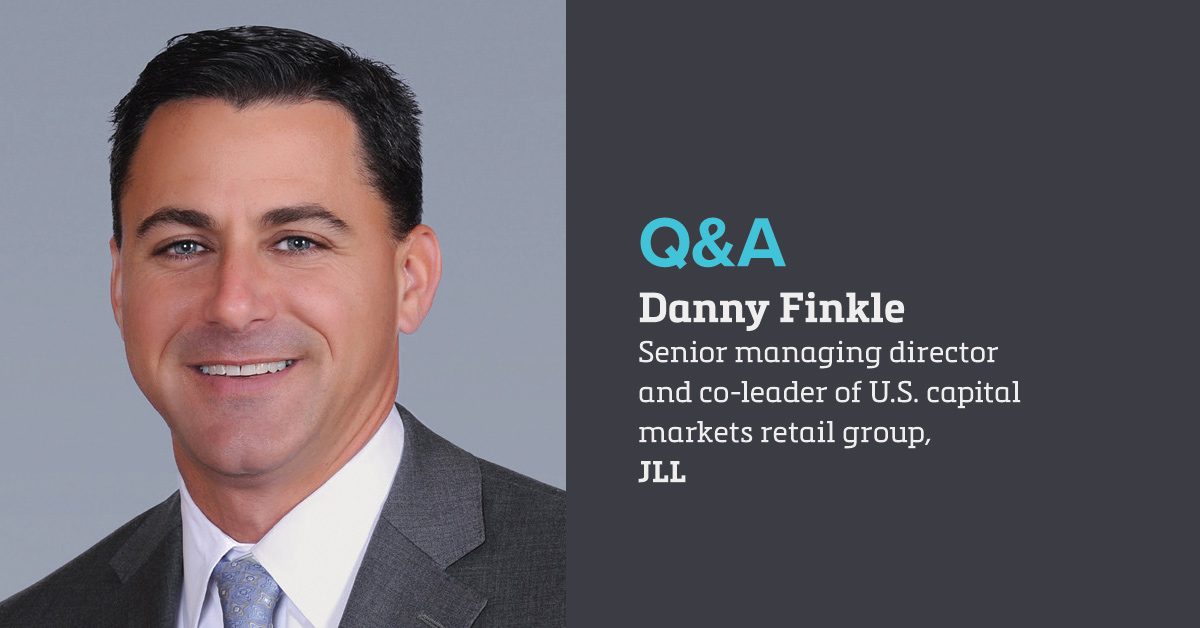The retail sector has been among the hardest-hit commercial real estate asset classes during the COVID-19 pandemic. Prior to this crisis, traditional retail was experiencing great change brought on by the rise of online shopping. Danny Finkle, co-leader of JLL’s U.S. capital markets retail group, spoke with Scotsman Guide about the outlook for retail properties this year and beyond.
How has the retail sector fared during the epidemic?
The retail-sector performance has varied greatly depending on the regional location, the core business type and based on different retailers’ ability to adapt quickly. Some areas of the country have experienced multiple shutdowns, which put enormous pressure on all retailer operating metrics.
Retailers that have been able to remain open for business obviously have performed much better than those that were not. From a core business standpoint, grocery stores have performed extraordinarily well, as well as pet supplies, home improvement and home furnishings (stores). The sectors that have been hit the hardest have been the entertainment and experiential retailers, so movie theaters, bars and restaurants.
Given the rise of online shopping, will traditional retailers recover their market share post-pandemic?
The U.S. is over-retailed on a retail per capita basis. The retail per capita in the U.S. is around 25 to 26 square feet of retail per person, compared to what you’ll find in Europe, where it is closer to 4 or 5 square feet per person. So, we are going through a downsizing of the retail industry. The most immediate downsizing today seems to be in the enclosed-mall sector. There is an expectation that we will see a number of enclosed malls fail over the next several years. The consolidation of the enclosed-mall industry was a pre-COVID trend that was expedited as a result of COVID.
Do you expect retail-property values to drop substantially?
There will be a bifurcation of retail. There is a segment of the retail market that is going to thrive and be more desirable as a result of the pandemic. And then there’s a segment of the retail market that’s going to suffer. It really gets into the nuances and the details of what comprise specific assets. For that reason, it is very difficult to make broad comments about retail-property values and vacancy rates going forward.
There are definitely some retail sectors that remain challenged on a go-forward basis, but all in all, the retail industry is surprisingly healthy.
What is likely to happen to existing retail properties that fail?
In a lot of cases, you’re talking about large parcels of land at major intersections in prime locations of their respective markets. So, there’s great demand for these properties for a variety of uses. Once the dust settles, there’s going to be a number of amazing development and redevelopment opportunities. The redevelopment process is a very long process that requires extensive capital, cooperation from municipalities and innovative developers to lead the way.
How will retailers evolve post-pandemic to compete?
The retail market was evolving pre-COVID to an omnichannel distribution market, where retailers were prepared to sell goods in their stores as well as through online channels. They were prepared to ship goods to the consumer directly, and to allow people to buy online and pick up in store.
So, what you saw here is that the retailers that were further along in their omnichannel strategy and ability to execute did quite well through the pandemic. There are definitely some retail sectors that remain challenged on a go-forward basis, but all in all, the retail industry is surprisingly healthy. ●
Author
-

Victor Whitman is a contributing writer for Scotsman Guide and a former editor of the publication’s commercial magazine.
View all posts






